Basic Information About How to Write a Creative Project Brief for Any Digital Work
When tackling intricate projects, professionals often craft a project documentations to ensure a systematic approach to the task at hand. To formulate this plan effectively, a comprehensive understanding of all the intricacies involved in the project is crucial. This understanding is encapsulated in a project brief or creative brief, a foundational document that outlines the essential details and objectives of the project before it kicks off. The project brief acts as a roadmap for the entire team, fostering a cohesive understanding among all stakeholders.
Whether you are managing projects within a corporate setting or engaging in freelance work, the careful crafting of a project brief supported by technical requirements is an essential step in achieving project success.
 Project Charter
Project Charter
In large projects, project charter serves as a central hub for decision-making, risk management, and issue resolution, functioning like a control center. This authoritative document not only establishes a shared understanding among stakeholders but also ensures everyone is on the same page with the project's overarching vision. Serving as a formal agreement, the project charter binds the project sponsor, essential stakeholders, and the project team, solidifying their commitment and responsibilities.
Read moreIn addition to the project brief, technical requirements or specification (technical standard) further bolster the planning process. These specifications provide the necessary insights into the technical aspects of the project, guiding the team in selecting appropriate platforms, tools, and programming languages. The combination of a thorough project brief and detailed technical requirements creates a robust foundation for a successful project execution.
 Project Plan
Project Plan
A well-constructed project brief becomes the cornerstone for the subsequent creation of a project plan. This plan, in turn, serves as a detailed guide, breaking down the project into manageable phases, allocating resources, and setting timelines. It is a vital tool for project managers, freelancers, and clients alike, ensuring that everyone is on the same page regarding project goals and requirements.
Read moreUnderstanding how to create a project brief and technical requirements is crucial for all types of work. Whether it's in technology, construction, design, or marketing, clear instructions are essential. For example, in software development, knowing the project's scope and technical specs is key. Similarly, in construction, precise requirements ensure safety and compliance. In fields like design or advertising, a detailed brief guides the creative process. While the specifics may differ, defining project details is always important.
Different types of projects:
Graphic design projects Audio projects Video projects Writing projects Marketing projects Programming projects
Each of these areas has distinct characteristics and details that should be taken into account when developing the project brief and specifying technical requirements.
Background and Overview Information
The background and overview section of a project brief explains what the project is about and what needs to be achieved, it includes information about the product and the main message that needs to be conveyed. It sets the context for the project and aligns everyone's understanding of the project.
A company that has been in the market for a long time basically already has ready-made materials in the form of a presentation of the brand book, etc. All you need to do is to attach all relevant materials and describe a brief general description of the project. Beginners at least can provide some information about themselves, the business, and project ideas.
Before establishing a long-term partnership, it is natural for people to want to learn more about each other. A creative brief is a useful way to do this, as it allows both parties to understand each other's past experiences and goals. While it is not necessary to share extensive personal information in the short term, it is important to clearly outline the purpose of the project. This helps to build trust between people and leads to better outcomes.
Unfortunately, there are unscrupulous individuals and incompetent individuals on the internet, and both customers and service providers are often concerned about these issues before starting any project. Competence on both sides is essential for effective communication and partnership, and a creative brief or technical specifications can be a useful tool for achieving this.
How to Build Trust with Business Partners from Other Cultures

Trust is the social glue that holds business relationships together. But, how do managers decide whether to trust a potential partner outside their business? And how does culture influence this decision-making process? To answer these questions, the authors...
Read more11 Brand Identity Examples to Inspire Your Own

Picture any successful brand that you know and love. What’s the first thing that comes to mind? Is it their logo, their latest Instagram post or the last item you purchased from them? Whatever you’re envisioning, it’s all connected to how it made you feel.
Read moreSetting Goals and Objectives
Goals and objectives work on the principle of the general-to-specific method, where the general is the goal and the specific is the objectives.
The brief and the terms of reference or technical specifications are often confused. As you go deeper from a company description and general information to detailed requirements, the brief becomes technical specification (terms of reference).
Technical specification or specific tasks are more precise requirements necessary to achieve the goal.
Depending on whether the project is commercial or nonprofit, goals and objectives have a different nature of creating a product or service.
Commercial is a specific or objective set of rules to achieve certain goals, developed by experts over time, these rules are known to most, so there are not many questions.
Nonprofit projects are mostly based on a subjective idea of the goal. These are often individual preferences. Nonprofit project over time can become successful and monetized. But at the stage of its development are mostly some kind of subjective notions of future success.
In the creation of creativity for commercial purposes creation of something new and not standard is meant and the value of something new and non-standard is difficult to define if there is nothing to compare it with similar already having value. Creativity often originates as a non-commercial idea and only over time is monetized and capitalized by other market participants.
When you set creative goals and objectives it is worth taking into account what part of it is already objectively established norms when creating such objectives and what part is subjectively a new approach.
Since it is not always possible to determine everything during the construction of goals and objectives, planning errors are possible. Such mistakes can undermine the trust between the performer and the customer. This often happens when the budget is fixed and the customer is an intermediary.
From product to service, there are many different techniques for setting goals and objectives. Agility and waterfall are two different process methods for completing a project or work item.
Agile is an iterative methodology that involves cyclical and collaborative processes. Waterfalls are a sequential method that is also collaborative, but tasks are usually handled in a more linear process. According to agile methodologies, a project goes through a series of cycles throughout the project life cycle. Development phase, reviews, feedback, and release of work items-yes or no. If so, implement it and get the job done. If no, capture the required changes, track and adjust the backlog or priorities to reflect the new knowledge gained, and then proceed to the next task or sprint.
Waterfall method is a simpler process that guides the task through the stages of requirement definition, implementation design, work item deployment, implementation and quality assurance review, and finally feature maintenance.
List of popular programs for setting goals and objectives:
Monday.com is a cloud-based platform that allows users to create their own applications and work management software. The product was launched in 2014 and in July 2019, the company raised $150 million, based on a $1.9 billion valuation. The company went public in June 2021 and is based in Tel Aviv, Israel.
Google rank: 4.4
Trello is a web-based, Kanban-style, list-making application and is developed by Trello Enterprise, a subsidiary of Atlassian. Created in 2011 by Fog Creek Software, it was spun out to form the basis of a separate company in New York City in 2014 and sold to Atlassian in January 2017.
Google rank: 6.4

Asana is a web and mobile work management platform designed to help teams organize, track, and manage their work. It is produced by the San Francisco based company of the same name. The company was founded in 2008 by Dustin Moskovitz and Justin Rosenstein. The product launched commercially in April 2012.
Google rank: 9.4
Setting Measurable Result
The results are usually measured in relation to the ratio of price, quality and time. In general circles this is called the triple constraint. In the digital world of the Internet, it is common to measure the number of tasks to be done by the number of files or services, which in turn have a price, quality, and time to complete. It is customary to put each task into a milestone that has the triple constraint. A milestone can include both a fixed price and an hourly rate.
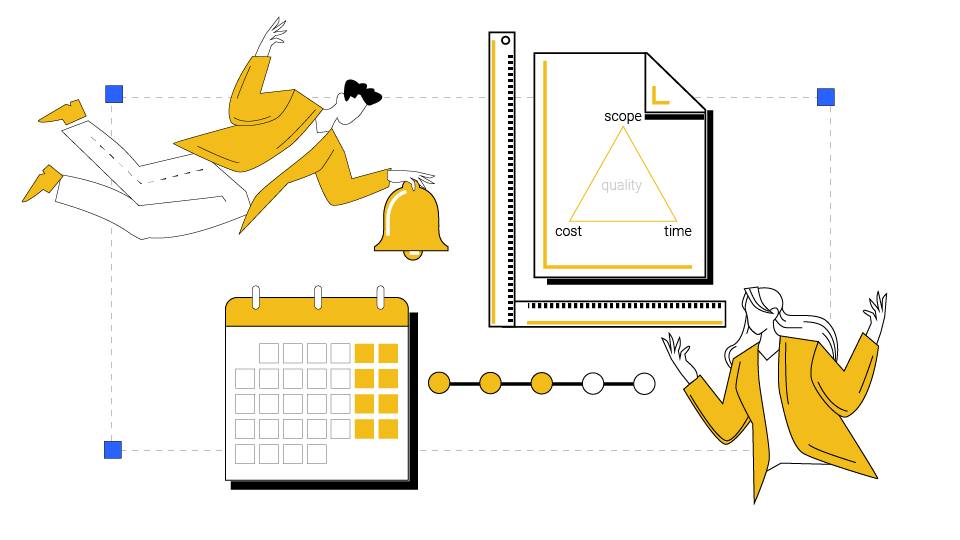
The measurability of tasks and work depends on various factors, including the competence of the customer. While physical work may be easier to measure, creative work poses more challenges in terms of measurement. Therefore, measurement should be approached with caution and careful consideration. The size and complexity of the project also play a role, as smaller and simpler projects are generally easier to measure. In such cases, a project may only have one milestone.
3 Types of Measurable Objectives To Track as a Freelancer
Whether you’re a one-person freelance company or have a team that you work with, goals are imperative in terms of providing direction for your company. Goals can be around revenue growth, customer satisfaction, or just about anything associated with improving your business long-term. Once set, you need to establish measurable objectives supporting them. The article How to Set Goals does a great job of explaining goals and what criteria should be used when setting supporting objectives.
Read moreExamples of Measurable Goals and Objectives

Do you often find yourself setting out big plans, only to fall flat and push the plan aside? This is a common occurrence. Luckily, there exists a well-defined solution that's easy to follow. It comes in a detailed system of measurable goals and objectives that puts you on a path to success.
Read moreProviding References
References are materials that serve as samples for your project. They allow the executor to understand the customer more accurately.
All new ideas are mostly created on the basis of old ideas or by mixing them, hence it is rational to find something similar to the existing one before you start creating something new. The more exactly the client's and executor's idea for a new project coincides, the greater the chance that everything will go without a hitch.
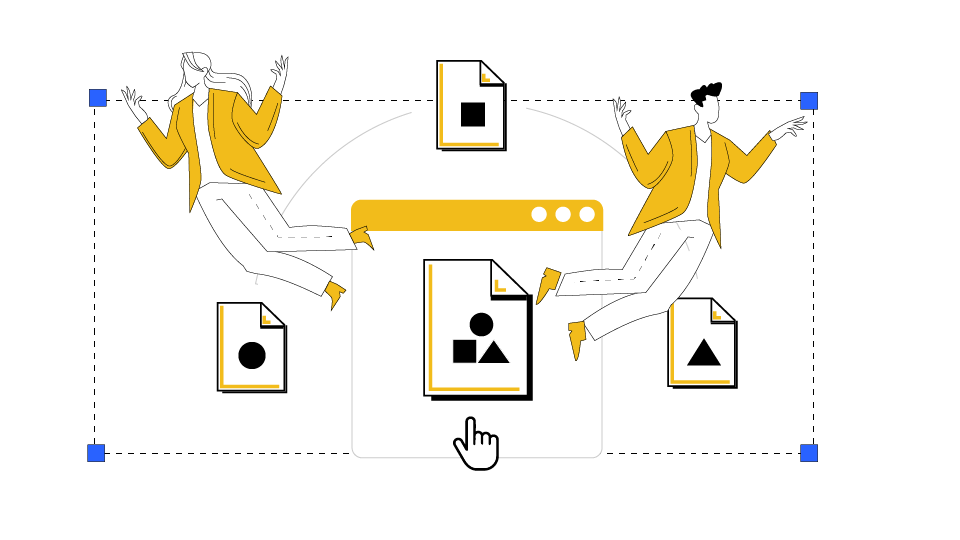
AI tools extend their impact beyond graphics, playing a pivotal role in various creative domains. In video production, AI can analyze scenes, detect patterns, and suggest visual elements, enhancing the editing process and ensuring visual coherence. In the realm of audio, AI aids in identifying musical patterns, suggesting compositions, or even enhancing sound quality through noise reduction algorithms.
Moreover, in writing projects, AI tools equipped with natural language processing capabilities can assist in generating ideas, improving writing style, and ensuring grammatical accuracy. When it comes to programming, AI can analyze code repositories, identify relevant solutions to coding challenges, and offer insights into best practices.
Leveraging AI for referencing in these diverse fields not only streamlines project exploration but also enriches communication and collaboration among stakeholders. The accurate and comprehensive references provided by AI tools serve as a robust foundation for new ideas, promoting seamless project execution and elevating the likelihood of success across graphic, video, audio, writing, and programming projects.
Video bloggers know better
Referencing is an old idea of technicalapproach to any works or investigations.
Identifying Competitors
Competitor analysis is a critical aspect of project management and business strategy. By examining the competition, organizations can gather valuable insights to inform decision-making and boost project success. In this article, we will explore the key components and stages of a comprehensive competitor analysis, including the significance of conducting a SWOT analysis of competitors.
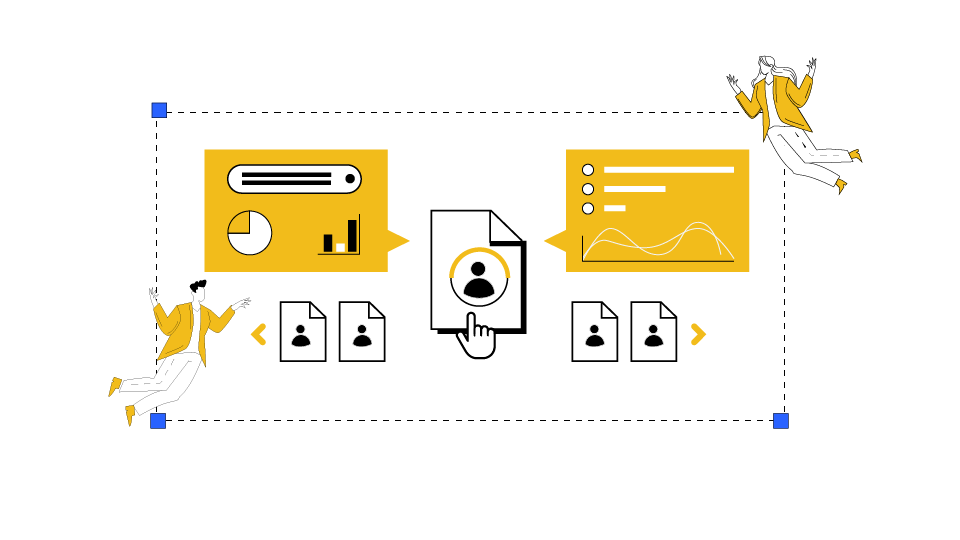
Components of Competitor Analysis:
- Identification and Profiling: Identify and profile your main competitors, including their strengths, weaknesses, target audience, pricing strategies, and product or service offerings.
- Market Share and Positioning: Analyze your competitors' market share and positioning to understand their market strategies, differentiation, and how they stack up against your organization.
- Marketing and Advertising Strategies: Evaluate your competitors' marketing and advertising tactics, such as their online presence, social media engagement, content marketing efforts, and advertising campaigns.
- Competitive Advantage: Identify the core competitive advantages of your competitors, such as superior technology, exceptional customer service, strong distribution networks, or innovative features.
Stages of Competitor Analysis:
- Assessing Overall Competition Level: Evaluate the overall level of competition within your industry to understand the intensity and dynamics of the competitive landscape.
- Competitor Map: Create a visual representation of the competitors in your market, their offerings, and their relationships with customers and suppliers.
- Comparative Portfolio Analysis: Compare and analyze the product or service portfolios of your competitors, including features, pricing, and market positioning.
- Comparative Analysis of Prices: Assess and compare the pricing strategies of your competitors to understand their pricing structures, discounts, and value propositions.
- Comparative Analysis of Product Distribution: Analyze how competitors distribute their products or services, including channels, partnerships, and logistics.
- Positioning of All Market Players: Evaluate the positioning of all market players, including your competitors, to identify potential gaps and opportunities for differentiation.
- Promotion Methods and Advertising Budgets: Study the promotional methods and advertising budgets of your competitors to understand their marketing strategies and reach.
- Description of Key Customer of Competitor: Identify and describe the key customers targeted by your competitors to gain insights into their customer base and preferences.
- Technology Assessment of Competitors: Evaluate the technological capabilities and advancements of your competitors to understand their potential impact on the market.
- SWOT Analysis Evaluation of Competitive Advantages: Conduct a SWOT analysis to assess your competitors' strengths, weaknesses, opportunities, and threats, including their competitive advantages.
Tools for identifying competitors:
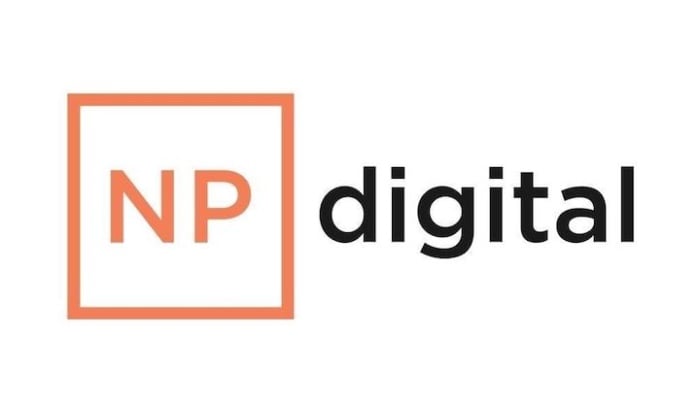
If you want more search traffic, all you have to do is follow the website analysis report. It will point out all of the SEO errors you need to fix in order to increase your rankings.
Google rank: 4.4

Social Blade is an American website that tracks social media statistics and analytics. Social Blade most notably tracks the YouTube platform, but also has analytical information regarding Twitch, Facebook, Instagram, Twitter, TikTok, Trovo, Dailymotion, Mixer, DLive, and StoryFire.
Google rank: 6.4

Another staple competitor analysis tool for SEO is Ahrefs’ site explorer, which allows you to check any URL’s top organic keywords. Additionally, you get a rough estimate of how much traffic a competitor receives on those keywords.
Google rank: 9.4
Identifying Target Audience
The target audience is a group of people who fit best with your ideal customer who uses your product or service. The more accurate description of the person with details of their preferences, problems, and everything that corresponds to the value of your product or service and the problems they solve, the more accurate the performer can provide you with a solution.
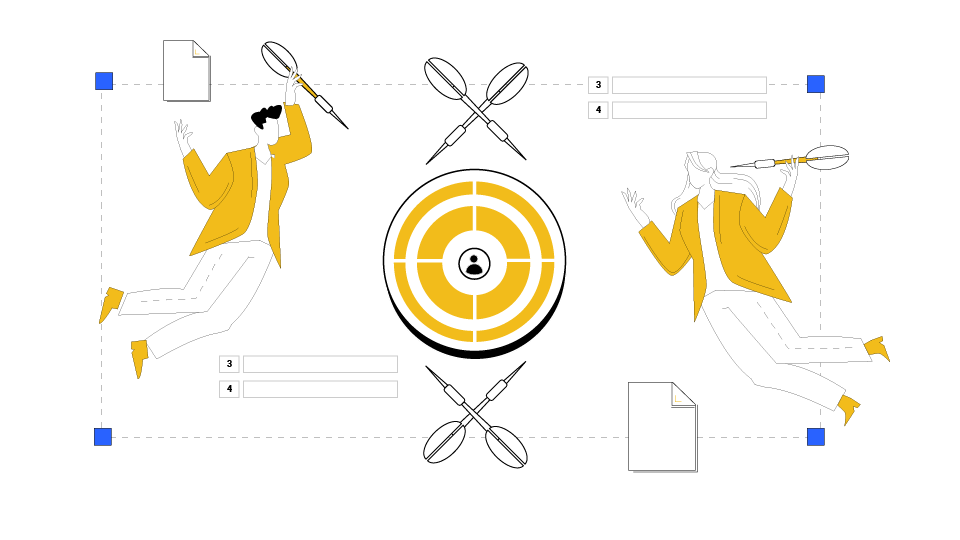
Defining a target audience is creating a portrait of a potential customer. When a general idea of a potential customer is created, it is customary to segment it according to four attributes.
- Demographic - age, gender, marital status.
- Socio-economic - education, career, income level.
- Geographic - location, district, if business is localized.
- Psychographic - psychological type of people: philistines, intellectuals, innovators, careerists, hedonists, wannabes.
Target audiance is usually divided into main and indirect.
To obtain the most objective data possible, it is optimal to use:
- Questionnaires
- Interviews
- Surveys
In reality, it is not easy to conduct a quality interview, collect questionnaires or even conduct a
survey. Therefore, you can do a mini-study.
Study of social networks. Search in social networks, profile communities, look through competitors'
pages.
Explore forums, blog comments, opinion leader profiles and other sites where representatives of the
target audience can be found,
If you already have a site with connected analytics (Google Analytics, Yandex.Metrika), study the
indicators
7 Tools to Help You Learn About Your Target Audience
Knowing your brand’s target demographics can help you create better audience profiles and reach them on the platforms and in the places they frequent most. There are a lot of ways to dig into the demographics of your current visitors and your target audience, and you may already have tools installed to start mining for information. Here are seven tools you can use to learn more about who your current visitors and customers are, as well as the audience you want to attract.
Read more8 Tools to Better Understand Your Target Audience
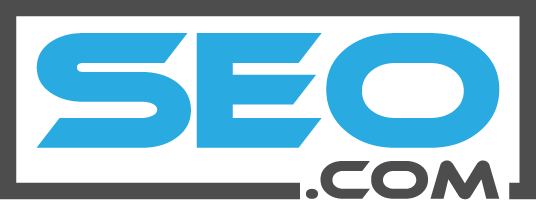
We read a lot in the SEO world about things like keyword research , analyzing your competitors, and other things to get traffic to your site. But I don’t see information very often about deciding who your target audience is and how to make sure your keyword choices will actually reach them. This is one way to take your keyword research to the next level, and it’s well worth the effort. So rather than trying to guess whether your SEO or PPC ads are appearing in front of the right people, here are some tools you can use to make sure.
Read moreCreating Project Budget
In the world of project budgeting, there is a variety of payment methods; however, the two main forms are hourly rates and fixed costs. Additionally, customized payment exists, for example, when writing an article, the price may be determined based on the number of characters. The choice of payment method depends on the preferences and convictions of the client or executor.
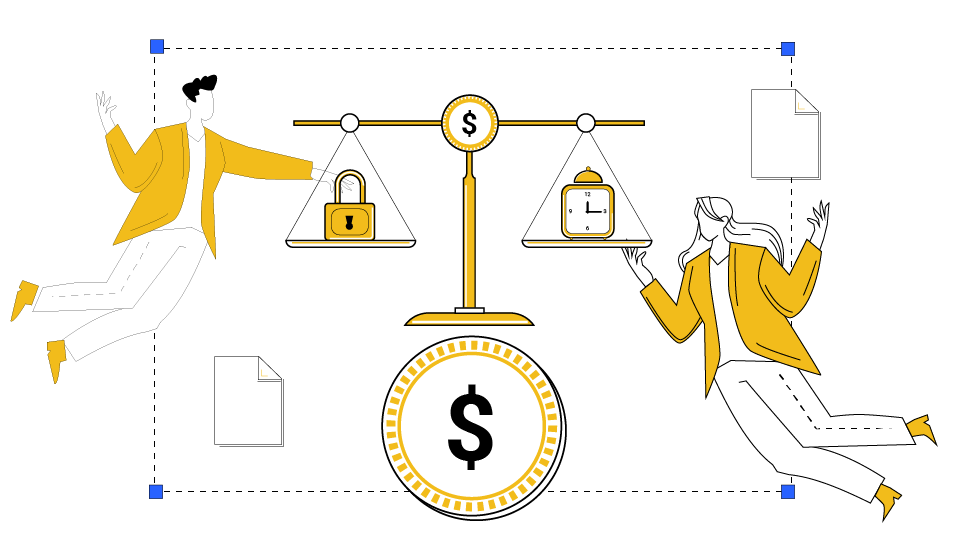
Hourly rate works well when the client doesn't know how long it will take to do a certain type or part of the work. Also, he can't determine how long the changes or revision will take. It is more difficult to control the project budget at this level.
Fixed price payment works when all parts of the project are known or the budget is based on previous similar projects. The changes are either included into the budget or paid additionally.It is easier to control the project budget at this level.
A simple guide to project cost estimation in 2024

Project cost estimating is the process of predicting the total cost of the tasks, time, and resources required to deliver a project's scope of work. Unfortunately for project and resource managers, humans can’t see into the future. And that’s what makes cost estimation for projects a daunting task. But even if you’re not clairvoyant, there are several methods and tools to help you create cost estimates that will be close to the project's actual cost.
Read moreHourly rate is measured by multiplying the hourly rate by the total number of hours.
Hourly rate * Total hours (Type of works) = Total Cost
Usually a table is created in which the accounting is done with the help of five main columns.
Video bloggers know better
The issue of fixed price and the hourly rate
always has hot discusses on the internet
Freelancer services have a lot of workers with different skills and cost per hour for close estimation market cost:

Upwork connects businesses with independent professionals and agencies around the globe. Where companies and freelancers work together in new ways that .
Google rank: 4.4
Join the thousands of entrepreneurs who are launching their contests every week and harnessing the awesome power of crowdsourcing.
Google rank: 6.4

Another staple competitor analysis tool for SEO is Ahrefs’ site explorer, which allows you to check any URL’s top organic keywords. Additionally, you get a rough estimate of how much traffic a competitor receives on those keywords.
Google rank: 9.4
Conclusion
In conclusion, writing a creative project brief is an essential step in the project planning process. The brief helps to align everyone's understanding of the project, establish trust between parties, and ensure that the project objectives are met. The process of writing a creative brief involves setting goals and objectives, understanding measurable results, and providing references to serve as samples for the creative team. Whether the project is commercial or non-profit, there are different techniques to achieve the objectives. By following the steps outlined in this article, you can write a creative project brief that will help you get the results you're looking for.
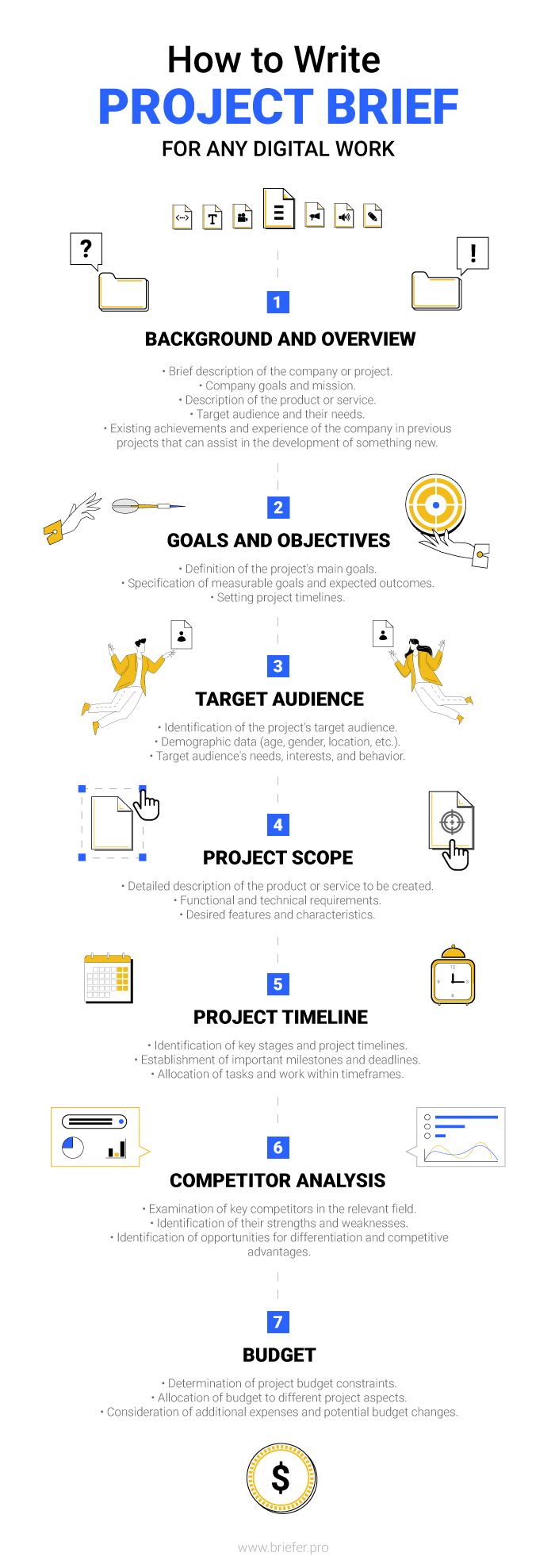
If you are looking for more detailed information on specific types of work like graphic design, video, audio, programming, copywriting, and marketing, you can follow this link: Project briefs categories This link will take you to a website where you can find briefs on a variety of different topics related to these fields. The briefs provide detailed information on how to approach each type of work, what tools and techniques are best suited for each, and other helpful tips and insights. Whether you are a seasoned professional or just starting out in one of these fields, the briefs can be a valuable resource to help you improve your skills and stay up-to-date on the latest trends and best practices.


 Discover the marketing magic of "Greek Peak," where Richard Thaler, a behavioral economics maestro, orchestrates pricing strategies with finesse. Avoiding abrupt spikes, prices gradually ascend, ensuring customer allure.
Discover the marketing magic of "Greek Peak," where Richard Thaler, a behavioral economics maestro, orchestrates pricing strategies with finesse. Avoiding abrupt spikes, prices gradually ascend, ensuring customer allure.
 Explore how neuromarketing reveals the brain's role in purchase decisions based on pleasure and suffering. Learn about the endowment effect and its intriguing parallels, as well as the diminishing marginal utility of wealth. Uncover key factors influencing buying choices and their implications for marketing.
Explore how neuromarketing reveals the brain's role in purchase decisions based on pleasure and suffering. Learn about the endowment effect and its intriguing parallels, as well as the diminishing marginal utility of wealth. Uncover key factors influencing buying choices and their implications for marketing.
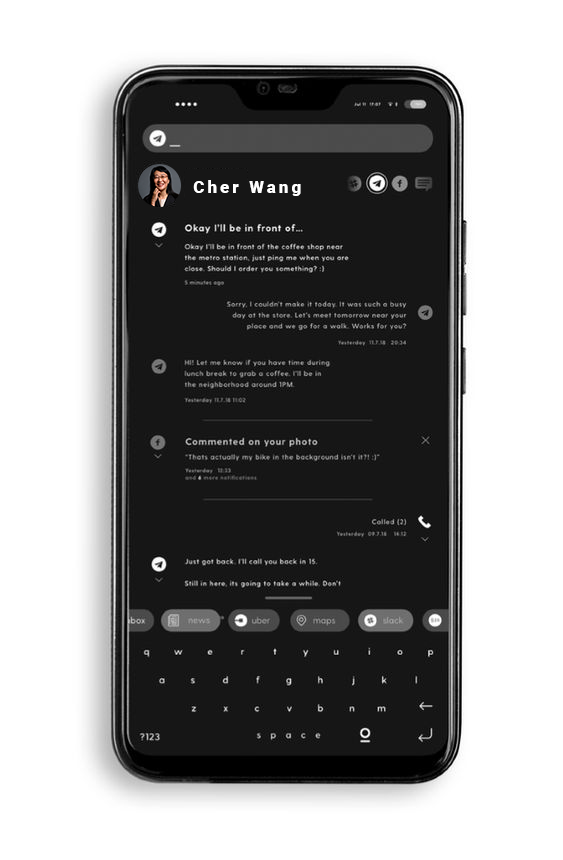 The article tells the story of how Taiwanese company HTC grew from a small startup into a major global smartphone manufacturer and innovator. It recounts how founder Cher Wang persevered despite early struggles, forging key partnerships with Microsoft, Google and others. HTC achieved many mobile firsts, transitioning from PDAs to acclaimed smartphones. The article tracks HTC's rise as a scrappy underdog to a top Apple rival.
The article tells the story of how Taiwanese company HTC grew from a small startup into a major global smartphone manufacturer and innovator. It recounts how founder Cher Wang persevered despite early struggles, forging key partnerships with Microsoft, Google and others. HTC achieved many mobile firsts, transitioning from PDAs to acclaimed smartphones. The article tracks HTC's rise as a scrappy underdog to a top Apple rival.
 This article tells the fascinating history of Victorinox, from its beginnings in 1884 as a small Swiss knife workshop to becoming one of the most recognizable international brands. It covers how founder Karl Elsener created the original Swiss Army Knife and its later innovations, as well as Victorinox’s expanding global reach in the 20th century through marketing and diversification. The article highlights Victorinox’s focus on quality Swiss craftsmanship even as the company grew exponentially. In 300 years of business, Victorinox has cemented its iconic Swiss Army Knife as a versatile tool for military personnel and everyday carry.
This article tells the fascinating history of Victorinox, from its beginnings in 1884 as a small Swiss knife workshop to becoming one of the most recognizable international brands. It covers how founder Karl Elsener created the original Swiss Army Knife and its later innovations, as well as Victorinox’s expanding global reach in the 20th century through marketing and diversification. The article highlights Victorinox’s focus on quality Swiss craftsmanship even as the company grew exponentially. In 300 years of business, Victorinox has cemented its iconic Swiss Army Knife as a versatile tool for military personnel and everyday carry.
 The article examines the history of the Hilton hotel chain, its ups and downs over the decades, and its marketing strategies to revive the brand. It covers the expansion and near-bankruptcy of early Hilton, its separation into US and British branches, and its eventual re-merger. The article also discusses Hilton's focus on franchising and promoting sub-brands, as well as its loyalty programs and renovations to restore the flagship Hilton image.
The article examines the history of the Hilton hotel chain, its ups and downs over the decades, and its marketing strategies to revive the brand. It covers the expansion and near-bankruptcy of early Hilton, its separation into US and British branches, and its eventual re-merger. The article also discusses Hilton's focus on franchising and promoting sub-brands, as well as its loyalty programs and renovations to restore the flagship Hilton image.
 Article analyzes the dual system theories of Kahneman (System 1 & 2) and Barden (autopilot & pilot) and their application in marketing. Explains how instinctive System 1/autopilot and logical System 2/pilot interact in consumer decisions. Emphasizes importance of brands appealing to both impulsive and rational thinking through product presentation and facts on pricing/quality. Discusses crafting holistic marketing strategies that target emotional and analytical drivers of choice.
Article analyzes the dual system theories of Kahneman (System 1 & 2) and Barden (autopilot & pilot) and their application in marketing. Explains how instinctive System 1/autopilot and logical System 2/pilot interact in consumer decisions. Emphasizes importance of brands appealing to both impulsive and rational thinking through product presentation and facts on pricing/quality. Discusses crafting holistic marketing strategies that target emotional and analytical drivers of choice.